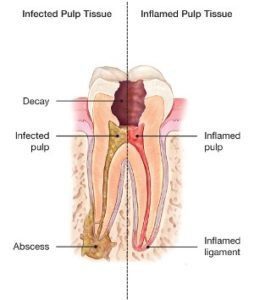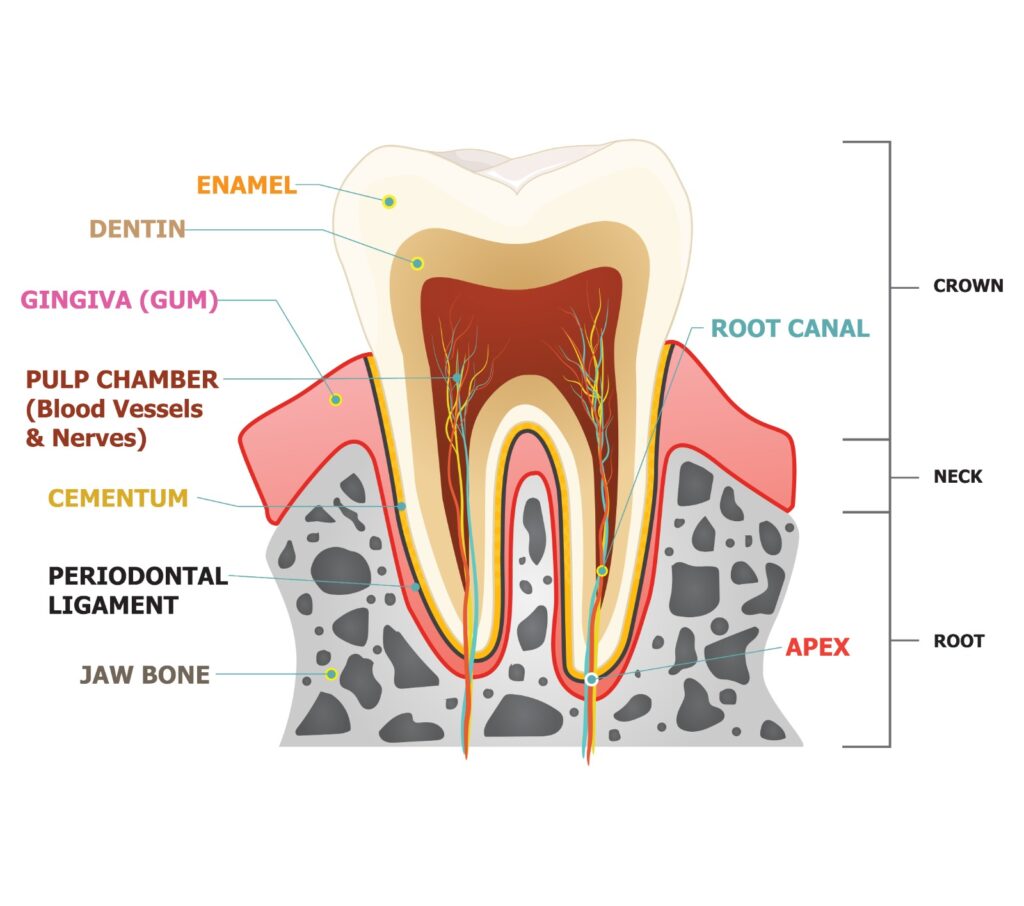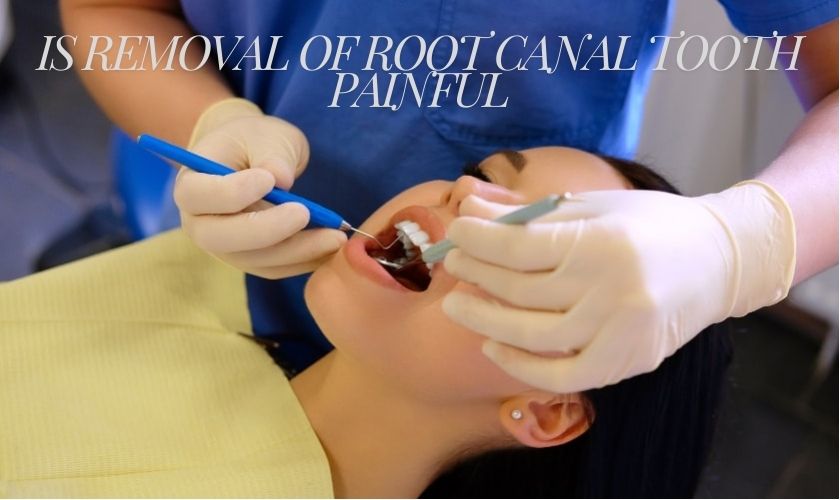Did you ever experienced a sharp, pounding pain in your tooth? It could be a sign of trouble. A common culprit behind such discomfort is damage or infection in the inner pulp of the tooth, overall necessitating root canal procedure.

Understanding Root Canal.
A dentist performs root canal therapy, also known as a “root canal,” specifically to treat infection or any further damage in a tooth’s pulp, the innermost part of the tooth.
Why Would I Need this Procedure?
Deep cavity: An untreated cavity can burrow deep into the tooth’s inner pulp, causing inflammation and infection.
Cracked/chipped tooth: A crack or chip in the tooth can expose the pulp to bacteria, particularly leading to infection.
Dental trauma: An injury to the tooth, such as blow to the face, can damage the pulp and so it requires a root canal.
Signs You Might Need Root Canal
If you’re experiencing any of the following symptoms, it’s crucial to see your dentist soon.
Persistent toothache
Sensitivity to hot or cold temperatures
Swelling in the gums
Loose tooth
Pus coming from the tooth
The Root Canal Procedure :
Basically, during root canal, dentist accordingly focuses on removing the infected pulp, cleaning the inside of the tooth, henceforth sealing it to prevent re contamination. Here’s a step-by-step process:
1. Examination and Diagnosis: The process begins with a thorough examination and X-rays to assess the extent of the damage and determine if root canal therapy is necessary.
2. Anesthesia: When dentist decide to proceed with a root canal, he generally administers local anesthesia to numb the tooth and surrounding area.. The dentist makes a small opening in the crown of the tooth to treat the pulp chamber.
3. Cleaning and Shaping: Using specialized instruments, the dentist carefully removes the infected or damaged pulp tissue from the inside of the tooth.
4. Filling and Sealing: Next, dentist thoroughly clean the canal and fill it with a bio compatible material. To seal and prevent future infection. Thereafter he seal’s the opening in the crown with a temporary or permanent filling.
5. Restoration: In some cases, a tooth that has undergone a root canal once may require additional restoration. Such as a dental crown, to strengthen and protect it from further damage
Recovery:
After undergoing a root canal procedure, patients are responsible for taking care of their teeth and gums. so as to facilitate healing and avoid re-infection. Which includes incorporating good oral hygiene, so avoiding hard or sticky foods, and attending follow-up appointments is recommended by the dentist.
Conclusion:
Significantly, root canals are one of the best dental procedures that can save a tooth from extraction and preserve your natural smile. If you’re experiencing any symptoms that suggest you might need a root canal. Don’t hesitate to schedule an appointment with your dentist for a proper diagnosis and treatment plan.




